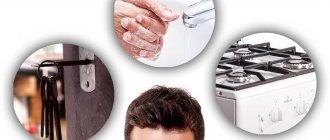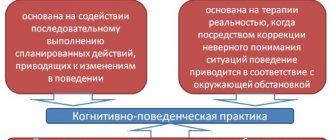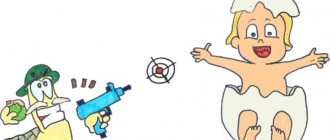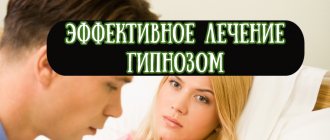Psychotherapy is a type of treatment in which the doctor uses the word as an instrument to influence the patient’s psyche. In the broad sense of its understanding, this area covers communication between the patient and the doctor as a whole. After all, when treating diseases of any profile, the doctor, communicating with his patients, inevitably has a psychological impact on them. That is why the moment of establishing contact is so important, as well as a personal approach to each person, taking into account the characteristics of his personality and specific social conditions.
The main advantage of rational psychotherapy is the elimination of manifestations of the disease by changing a person’s attitude towards himself, towards his condition and towards everything around him.
Ways to heal with words
What are the main directions that are elements of psychotherapy? They are represented by the following main ways to eliminate diseases:
- Rational psychotherapy.
- Suggestive psychotherapy. This method includes waking suggestion, which occurs when a person is in a state of hypnotic sleep, as well as self-hypnosis, which is called autosuggestion.
- Group or collective psychotherapy. It can be domestic, behavioral, or playful. Imagotherapy and psychoesthetotherapy are also distinguished.
- Narcopsychotherapy.
All of the methods listed above will have the maximum effect on the patient when combined with other types of elimination of the disease, including drug treatment, physiotherapeutic procedures, occupational therapy, exercise therapy, etc.
Direction of rational psychotherapy
To get rid of diseases, the doctor can influence the patient with the help of explanations. The main thing is that they are logically reasoned. A similar method is known in medical practice as “rational psychotherapy.” When using it, the doctor must explain to his patient what he does not understand and does not know, and what can shake his false beliefs.
Along with the direct verbal influence of rational psychotherapy, indirect suggestion is also accompanied. For example, the method of explaining the situation is sometimes used to other persons in the presence of the patient. This allows for the therapeutic effect to be achieved indirectly. In addition, rational psychotherapy uses various didactic techniques, as well as emotional influence.
Most often, treatment is a dialogue that the doctor conducts with his patient. Such an interview makes it possible to explain to the person the circumstances that led to the disease. At the same time, the doctor describes the nature and prognosis of the intended treatment. The psychotherapist must maintain simplicity and clarity in his argumentation. At the same time, he, using any facts and indicators that indicate even minor improvements, should try to inspire the patient and help him overcome the pessimistic ideas that exist.
The success of using the method of rational psychotherapy largely depends on the personality of the doctor, on his interest in curing the patient, as well as on sincerity, the ability to persuade and listen patiently, to win sympathy and trust.
The first experiments in which the use of such a technique was considered were carried out on the basis of classical and operant conditioning described by I. P. Pavlov, as well as B. Skinner. The basic formulation of these concepts consisted of a “stimulus-response” chain and adhered to the postulate that stated that behavior leading to the achievement of the desired result should be consolidated, and, on the contrary, behavior that does not lead to it should fade or weaken.
Today there are a large number of methods of rational psychotherapy. Let's consider those that are most widespread in practice.
Other details
According to scientist Eric Roux, auditing is one of the core practices of Scientology. The main purpose of this psychotechnics in the doctrine of Scientology is to rediscover the natural abilities of man, realizing that he is a spiritual being.
In the context of Dianetics or Scientology, auditing is an activity in which an auditor, trained in communications, listens to and gives auditing commands to a subject referred to as a "preclear" or more commonly as a "computer". Although audit sessions are confidential, notes taken by the auditor during the sessions are kept in the sect's archives. Some believe that auditing is a technique of psychological influence and a unique form of directive hypnosis. One way or another, its various modifications are quite successfully used by some practical psychologists.
Scientology makes a distinction between auditors - those who practice auditing - and the public (the public) - those who receive teaching but are not trained to perform the practice on others. Auditors are considered higher ecclesiastical figures in Scientology, as they are seen as more focused on achieving the goals of the religion, or "cleansing the planet" in Scientology terminology.
Paul Dubois method
Rational therapy proposed by this Swiss neurologist is the most affordable way to cure the patient. It is used not only by narrow specialists, but also by general practitioners.
Du Bois's rational psychotherapy uses the patient's ability to draw logical conclusions, make comparisons, and prove the validity of existing facts. This method was an alternative to treatment by suggestion. At the same time, rational psychotherapy primarily relied on the patient’s thinking and reason.
Paul DuBois believed that the origins of the development of neuroses lie in errors of judgment and weakness of the intellect. Of course, at present these theoretical conclusions are not accepted unconditionally. Nevertheless, many of Du Bois's recommendations and conclusions, which he made on the basis of numerous observations, have great practical value. An example of this is the description of a conversation between a Swiss neurologist and his patient who suffered from insomnia. You can get acquainted with it in the book “Neuroses” by A. M. Svyadoshch: “Do not think about sleep - it flies away like a bird when they are chasing it; destroy your empty worries with healthy thinking and end the day with some simple thought that will allow you to sleep peacefully.”
In his practice, Du Bois relied entirely on logic. Using this scientific direction about the laws of thinking, he quite convincingly demonstrated to his patient the errors that took place in his reasoning and were associated with an incorrect assessment of the pathological condition. Such an effect on the patient is the basis of this method. But besides this, Du Bois’s rational psychotherapy includes emotional influence, suggestion, study and further personality correction, as well as rhetorical didactic techniques.
Forms of art therapy
Almost from the very moment that Adrian Hill introduced the term “art therapy,” a conventional division of this technique into active and passive forms appeared among specialists. The first implies that the person himself is actively engaged in a certain type of creativity. In the process of creation, his psyche becomes healthier and his mood improves.
When art therapy sessions are held in a passive form, their participants do not create anything themselves, they only study objects of art. For example, they listen to musical compositions, look at paintings or sculptures, and so on. In its own way, this activity is also beneficial for the psyche. For many, it evokes peace and tranquility, and this, in turn, cannot but have a positive impact on the general psycho-emotional state of a person.
It cannot be said that the passive form of “art therapy” does not involve any mental work at all. A person does not simply “consume” a drawing, a melody or a sculptural element, he analyzes it, thinks about it, and also evaluates it. An object of art resonates in his soul, prompting certain thoughts and conclusions. This cannot always be done using other psychological techniques.
There are a great many situations in which active or passive art therapy can be useful; we can say that the list of indications for this method of treatment or psychocorrection is unusually wide.
Albert Ellis method
This psychologist developed a method of rational-emotional psychotherapy. It is based on three main aspects of human mental activity. These are thoughts, or cognitions, as well as behavior and feelings.
In Ellis's rational-emotive psychotherapy, the following are distinguished:
- Descriptive cognitions. These thoughts contain the objective information that was perceived by the individual.
- Evaluative cognitions. This type of thoughts reflects a person’s attitude to reality.
According to the provisions of the method of rational emotional psychotherapy by A. Ellison, the two types of cognitions indicated above have connections of varying degrees of rigidity. Negative and positive emotions are caused not by objective events that have occurred, but by their assessment. In this regard, many psychopathological disorders and symptoms in the emotional sphere can be considered as a result of disturbances in the cognitive area, which is called irrational attitudes. They represent tight connections between descriptive as well as evaluative cognitions. These violations are expressed in instructions and requirements, orders, etc. and do not correspond to reality either in quality or in strength.
Being unrealized, irrational attitudes provoke the emergence of negative emotions in inappropriate situations, which complicate the life of an individual and prevent him from achieving his goals. For the normal functioning of the psyche, it is necessary to create a rational system of evaluative cognitions. Flexible connections that connect such thoughts with descriptive ones are also important.
What is the method of rational-emotive psychotherapy? It includes recognizing existing irrational attitudes, confronting them, as well as revising flexible (rational) attitudes and consolidating their functioning. A patient who has successfully completed this path begins to respond adequately to current events.
A. Ellison outlined his main ideas in the book “Humanistic Psychotherapy: A Rational-Emotional Approach.” In it, he pointed out that any person is able to control and influence their own emotional reactions in the form of behavior and feelings. Moreover, since he himself, albeit unwittingly, forced himself to suffer, he is also capable of doing everything to stop it. The book teaches its reader not to give in to suggestion and not to depend on circumstances. To do this, you just need not to think about how most people around you feel.
Art therapy: what is it and how does it work?
The word “art therapy” does not surprise anyone today. People who are at least a little familiar with English know that the word “art” is translated as art. It turns out that this is a kind of healing method based on art.
The concept of “art therapy” was introduced into use in 1938 by Adrian Hill, who in his research described working with tuberculosis patients in sanatorium institutions. The term was applied to all types of art that patients practiced in hospitals and mental health centers.
Scientifically speaking, art therapy is a specific method of psychotherapy, a method of psychocorrection. It is based on the use of various types of art to improve the psycho-emotional state of a person.
The main ways to achieve a positive result are self-awareness and self-expression.
Art therapy will allow you to symbolically explore and express any human emotion: anger, love, joy, and so on. Moreover, the way of expressing it does not have any rules or standards. The key to the success of such a psychological method is its individuality. In other words, each person chooses what suits him best.
This is the involvement of a person in the field of art that is most favorable to him. Through creative activity, his personality is harmonized and his moral state is improved, thus improving his mental health. Drawing, sculpting, quilling or origami - there are quite a few types of art, and all of them in their own way help a person to know himself, determine the cause of his psychological discomfort and eliminate it. There are no contraindications or restrictions, as well as no side, often negative, effects.
Aaron Beck Method
This researcher developed a method of cognitive psychotherapy. It is based on the assertion that mental disorders and emotional reactions occur in connection with cognitive skills and structures that have been acquired by a person in the past.
According to the statements of the American professor A. Beck, those psychological disorders that preceded neurophysiological disorders have a direct connection with aberrations of thinking. By this term, the researcher understood the incorrect processing of information, which as a result contributed to a person’s distortion of a situation or object. Such cognitions are the main cause of false beliefs. As a result, the patient experiences inappropriate emotional reactions.
Unlike other methods of rational psychotherapy, the method created by A. Beck contains rules for regulating behavior, which is based on two main parameters, namely danger/safety, as well as pain/pleasure. The axis of the first of these two combinations of elements includes those events that are associated with psychosocial, psychological and physical risk. However, the rules for regulating behavior in most cases do not take into account the real situation. This leads to the individual having various problems. Using the method of rational psychotherapy by A. Beck, it becomes possible to modify existing rules, make them more flexible and less personalized, that is, bring them into line with existing reality.
Art therapy for the elderly
In this case, art therapy gives strength and the desire to live on. This is an opportunity to usefully spend your free time that appears after retirement, not to fill your head with bad thoughts, and also to maintain intellectual and physical shape.
This practice is actively used in European countries. There, special schools and creative clubs are organized for older people.
In this case, pensioners are taught:
- Crafts - allows you to train fine motor skills and maintain brain activity.
- Singing perfectly trains memory, improves the functioning of the respiratory system and improves mood.
- Drawing helps to overcome stress, calm nerves and relieve worries. In the same case as with needlework, drawing trains fine motor skills and develops memory.
- Dancing improves your mood and allows you to stay physically fit.
Cognitive psychotherapy for addictions
The real scourge of modern society is alcoholism and drug addiction. These are diseases that can be caused by a genetic factor or are a model of behavior of people who are unable to solve their problems, and relieve the tension that has arisen in the body with the use of psychoactive substances.
And here individual rational psychotherapy for drug addicts and people who drink alcohol excessively can come to their aid. What is this method? This is cognitive-rational psychotherapy aimed at identifying the main triggers, which are thoughts, situations and people that trigger the mechanism of drug or alcohol use. This method allows a person to get rid of bad habits. This happens thanks to awareness of one’s own thoughts, careful study of the situation and subsequent changes in behavior.
Art therapy for preschoolers
Art as a means of healing and communication is especially relevant for children and adolescents. Young children often have to rely on limited language to express complex thoughts and emotions, and there is a barrier that can be overcome by using things they understand a little better, such as drawing and coloring. It is equally important for teenagers to have such a pressure-free, consequence-free environment for their thoughts and feelings.
Anti-stress coloring pages for children bring invaluable benefits:
- Relaxation. The child doesn’t even suspect it, but while coloring his brain is resting. Improved concentration. Focusing on one thing serves as a kind of training for willpower, attentiveness and perseverance.
- Development of coordination and accuracy. Few adults remember how difficult it is at first to fit into the outline, not to get into the part of the picture where there should be a different color. The child learns to calculate forces and perform movements clearly.
- Improved perception. For the little ones, coloring can become a platform for memorizing colors and shapes. Studying the surrounding world.
- Improving logic and imagination. It would seem that the drawing is already ready, what else can you come up with? But no one is stopping the child from finishing something, making it colorful where it shouldn’t be. And most importantly, the child will always have a specific reason why his picture looks the way it does.
- Memory development. Many coloring books are pictures from life. And kids, on a subconscious level, try to make their drawing believable. But to do this you need to remember what a car or a watermelon looks like.
There is also educational art therapy, in which the child learns to be himself and use emotions as a tool for communication. Here, the concepts of magic, humor and justice present in fairy tales, as well as music and images in works created by great artists and the kids themselves, will act as assistants for the teacher.
In this case, the main pedagogical task is to teach children correct communication, empathy and careful relationships with people around them.
Experts cite the combination of psychology, medicine and pedagogy as the advantages of art therapy for preschoolers, which allows one to achieve much more goals. In addition, the advantages are:
- A safe environment during classes and no competition between children.
- Thanks to the result obtained in the form of a drawing, dance or song after each lesson, the teacher can monitor emerging changes in the child’s development.
- The opportunity for a child to realize his own worth through such activities.
Preschool children are characterized by variability of attention and the inability to concentrate on a task for a long time. This should be taken into account when planning an art therapy session. .
Psychodrama by George Moreno
Psychotherapy in rational therapy can also use a group approach. This is what distinguishes J. Moreno’s method, based on the theory of sociometry he created, designed to become the key to solving many social problems. When using this method, the doctor offers his patients a role-playing game. In its course, he creates conditions that force a person to spontaneously express his feelings about a problem that is relevant to him. The main postulate of this method is the statement that any individual has a natural ability to play.
Thanks to this, when performing a particular role, he can independently influence his problem and even stop a crisis situation. Such a psychotherapeutic process leads to overcoming unconstructive behavioral stereotypes and ways of emotional response, forming an adequate and deep self-awareness in the patient.
Behavior modeling
This method belongs to cognitive behavioral psychotherapy. With its help, the patient is encouraged to independently solve his problems. Cognitive behavioral psychotherapy is carried out in three stages:
- Self-observation with elements of self-control.
- Conducting an analysis of problem behavior and identifying its source (teachers, parents, environment, etc.).
- Conclusion of a psychotherapeutic agreement. This is a kind of contract, which is a register of planned changes, as well as protocols of what has been achieved after performing independent home exercises.
Techniques of rational psychotherapy
How can a person get rid of negative emotions? To do this, he will need to apply one of the techniques of rational psychotherapy. Most of them are used by professionals to treat neuroses in their patients. Sometimes with their help it is possible to eliminate psychosis.
The most common causes of such pathologies are accumulated negative emotions. The patient becomes fixated on traumatic situations, which causes him to have excessive acute experiences that cause illness.
Techniques of rational psychotherapy are most indicated for resentment caused by unfulfilled hopes. By the way, a person often resorts to this technique completely unconsciously. He shares his grief with relatives, a friend, and sometimes even with a stranger. First of all, he hopes to justify his own position in the conflict that has occurred. However, this is not the main point here. It is important to understand the reasons for what happened, which is why it may turn out that the offended person is to blame for what happened. And this means that there is no one to be offended by.
Goals of the methodology
Art therapy has a good effect on almost any problem. Whether it’s a bad mood or depression, problems related to the “I-concept” or too low self-esteem, dissatisfaction with oneself or a certain area of one’s life - art as a method of therapy will help you understand, analyze and find a solution to all this.
Art therapy allows you to achieve positive results when working with people who have certain psychological problems:
- release of negative thoughts and emotions;
- facilitating complex psychotherapy;
- conducting detailed psychodiagnostics;
- working through thoughts and feelings that patients hold back;
- establishing a trusting relationship between doctor and patient;
- development of creative abilities;
- increasing self-esteem and ensuring personal growth;
- learning to control one’s own behavior and emotions;
- identification and analysis of the reasons that provoked emotional disorders or difficulties.
This psychotherapeutic technique is used for the following purposes:
- as a way to release positive and negative emotions
- to increase the effectiveness of psychotherapy
- for the sake of obtaining material that allows diagnosing a person’s mental and psychological state
- to work through repressed thoughts, feelings and emotions
- to help the patient focus on sensations or feelings
- to establish contact with the patient
- to improve self-control
- to develop creativity and thus increase a person's self-esteem.
For people with increased anxiety or obvious phobias, art therapy acts as a method of calming down, for those who are sad, it is a means of improving their mood, and for people who are confident in their own insignificance, this technique helps to believe in themselves and realize their own importance and uniqueness. The main thing is to choose the right art therapeutic method that optimally matches all the characteristics of the patient’s psyche.
Abstraction
People also resort to this method in their lives completely unconsciously. We try not to think about the traumatic situation. However, this can be quite difficult to do.
The distraction method allows you to get the maximum effect with weak, but constantly affecting negative stimuli. In this case, negative emotions can gradually accumulate, leading a person to nervous breakdowns and neuroses.
How can you distract yourself from a traumatic situation? For this we recommend:
- Sport games. Tennis, football or volleyball perfectly relieve irritation and eliminate grievances.
- The use of aesthetic therapy. In a state of distress, it is recommended to visit an art exhibition, watch a good comedy, or listen to talented music.
- Visiting good friends. Such a step will allow you to eliminate the bitterness that has accumulated in your soul and not take it out on your loved ones.
- Communication with nature. Negative emotions are especially well eliminated near the river, in the forest, in the mountains and in other beautiful places where peace of mind returns to a person.
In case of prolonged exposure to negative factors, it is recommended to change the situation by taking a vacation and going on a trip.
Indications for art therapy
Since the main purpose of art therapy is to harmonize personality and improve a person’s psycho-emotional state, any deviation in mental well-being can be an indication for it. We are talking not only about pathologies, but also about negative emotions that are quite normal for any person.
Experts name the most common indications for this type of treatment:
- state of stress and depression, as well as depressed mood;
- emotional instability and impulsiveness of a person;
- presence of fears and phobias;
- low self-esteem and negative attitude towards oneself;
- state of increased anxiety;
- unreasonable irritability and conflict of a person;
- closed personality and state of mental stress;
- psychological trauma received;
- impaired communication skills;
- crises of a certain age;
- delay in mental or speech development in a child.
This psychological technique is useful for children and adolescents, for mature people and representatives of the older generation.
Role-playing auto-training
When using this method, the patient will need to get used to the image of a cheerful or calm person. This method is great for preventing future conflicts and stressful situations. However, its effectiveness can only be felt by a person with an artistic nature.
In order to enter the role, you will need to choose a suitable ideal for yourself. The model can be either a real person or a movie character. But it is worth remembering: in order to remain calm in various situations using this method, you will need preliminary training.
Reviews
Gulnara, 39 years old, Ufa: “For art therapy there is no need for the mandatory presence of a specialist. It is a great way to lift your spirits. I really like to draw."
Elena, 48 years old, Novokuznetsk. “Drawing mandalas has become a way for me to achieve harmony and tranquility. In addition, such an activity does not require any significant costs or special skills.”
Vladimir, 43 years old, Podolsk. “Wood carving has become an outlet for me. I express my state in figures. There is already a whole collection - a lot of funny people, but there are also scary masks. Art therapy can be for every person, regardless of what age group he belongs to, a way to maintain or develop physical activity, to ensure a state of mental comfort and peace.”
Muscle relaxation
This method, which is also called autogenic training, is especially popular among psychotherapists. People often use it when working independently to solve their problems. Autogenic training is an independent method proposed in 1932 by a psychotherapist from Germany I. Schulz.
The main objective of this method is maximum relaxation while simultaneously instilling in oneself certain sensations, as well as learning to control the functioning of internal organs. Lightning-fast muscle relaxation allows you to quickly eliminate nervous tension, and do this in any situation.
Art therapy for adults
It allows you to release negative emotions and inner experiences without causing damage to surrounding things and people. Using simple and accessible techniques, the therapist assesses the patient’s physical and mental state, eliminates identified problems and improves emotional state.
Psychocorrection is carried out using one of the selected methods, for example, working with the patient according to a specific chosen scheme. In this case, a person is given a certain task, for example, to draw a picture or make a craft according to a certain template and on a given topic.
Another method of art treatment can be called communication on a free topic, when the patient himself determines the material, plot and tools of self-expression. At the end of such communication, the doctor evaluates the selection criteria and manner of implementation.
The most effective art treatment techniques for adults, when patients can practice the exercises on their own, are:
- Working with so-called creative waste, when a certain composition is made from things that cause negative emotions.
- A fairy tale written about some hero by the patient himself. Here the patient himself determines the character, lifestyle, time and place of action of the hero.
- In order to cope with internal fears, complexes and aggression, you can fashion and physically destroy these monsters within yourself.











